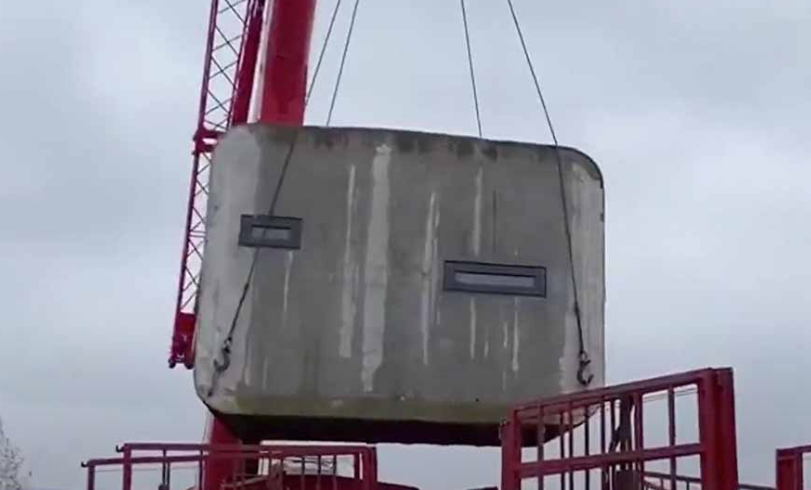
(Photo: CGTN)
The coronavirus outbreak has significantly increased the pressure on China's hospitals as many other types of patients also need medical treatment but wards are limited. 3D printing technology at this time stands out to brace the challenge.
A Shanghai firm can create coronavirus quarantine rooms with 3D printing technology. They've made 15 so far, and have donated them to a hospital in Xianning City, Hubei Province.
Winsun Building Technique Company said all their quarantine rooms were put into use last week. Each one measures 10 square meters, big enough for two beds. They meet required standards for heat preservation and isolation, and are designed to withstand strong winds and even earthquakes. The company said they're easy and cheap to make.
"A quarantine room can be printed in two hours, and one printing machine can produce 15 rooms a day. Its base cost is around 28,000 yuan (about $3,999)," said Ma Yihe, the Chairman at Winsun Building Technique Co.
Winsun said the cost is low because the construction materials are so cheap.
"We use recyclable materials including sand and construction residue. It is very environmentally friendly. When it comes to safety, the structures are at least twice as strong as concrete construction," Ma Yufeng, the marketing manager at Winsun Building Technique Co. further elaborated.
Very mobile and easy to set up, the 3D printed wards can be used as soon as they're connected to electric power. They're easy to disinfect, and can be reused when the epidemic ends.
Ma Yihe also introduced that if there's no further use for the rooms, they can recycle them to build something else. "We've been getting donations from other companies to sponsor more rooms."
The company's 3D printing technology is also being used for other structures including agricultural facilities, industrial parks and some tourist attractions.
According to the Chinese Mechanical Engineering Society, the market value of 3D printing technology in China will reach $10 billion in 2023.
Meanwhile, online medical diagnosis and treatment gained more popularity recently. "Now our online system proves to be very useful in the daily clinical practice. For example, it's quite often to share information online, including medical imaging. It can help doctors to treat patients remotely and rapidly," said Song Chengli, the professor at University of Shanghai for Science and Technology.
Professor Song also listed medical robots contributed as a useful role in combating the virus. "The medical robot working in many hospital in Wuhan can work 24 hours a day, and it will reduce the chance of doctors and nurses to contact a patient. It will help to reduce the crossing infection."


